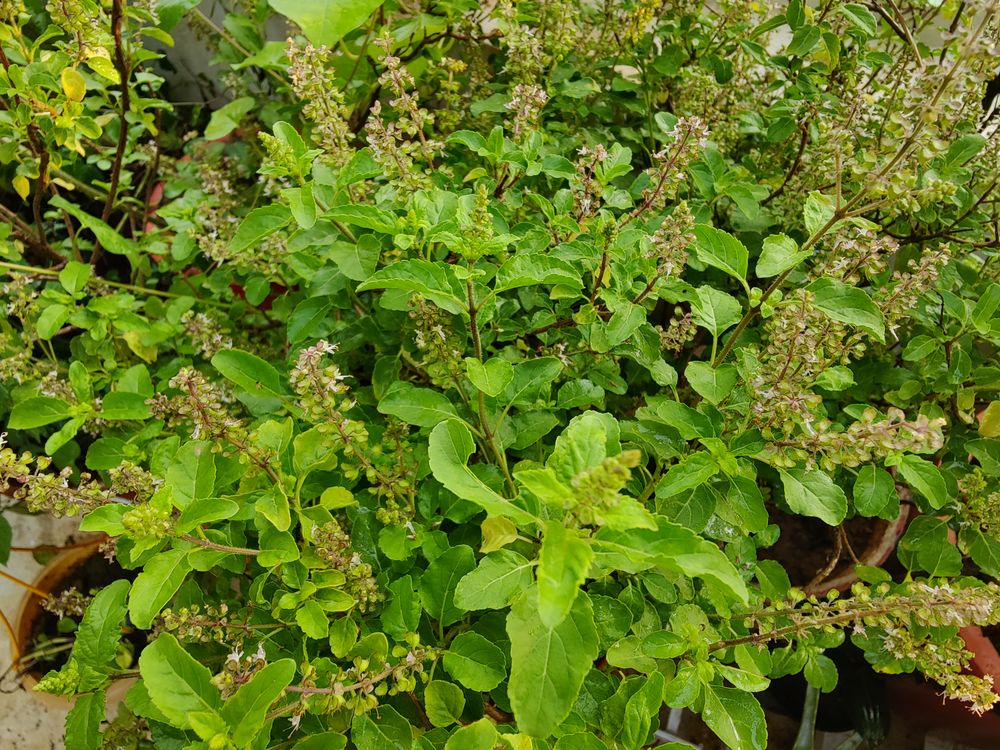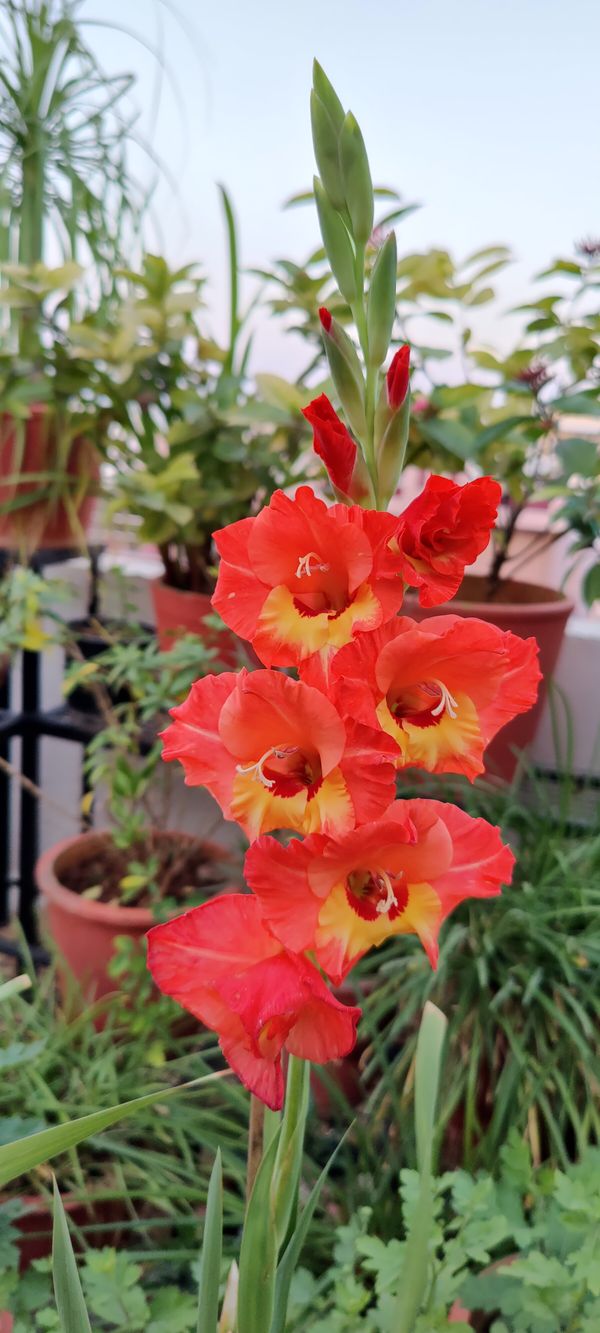How to Grow Beautiful Tulsi: 🪴 | Houseplants Notes 012 - Varsha Aundhia
Tips from an Experienced Gardener
Hello, fellow gardening enthusiasts! I’m Varsha Aundhia, and today, I’m excited to share some tried-and-true tips for growing beautiful Tulsi (Holy Basil) in your home garden. Known as the queen of herbs, Tulsi has numerous medicinal properties and is often found in Indian households because it is considered sacred among the Hindus. With the right care, you can have a thriving Tulsi plant that adds both beauty and spiritual significance to your space. Let’s dive into the essentials of Tulsi care!
Understanding Tulsi’s Needs
Plant Characteristics
Tulsi, also known as Ocimum tenuiflorum, belongs to the mint family and has originated in the Indian subcontinent. It is a short perennial shrub that grows up to one meter in height and has fragrant green or purple-colored leaves.
Climate Considerations
Moderate Temperatures: In southern areas, where the climate is typically moderate, you can expect your Tulsi to flourish throughout the year.
Extreme Climates: In northern regions with harsh winters and scorching summers, it’s crucial to protect your Tulsi. During extreme weather, place your Tulsi under a larger plant to shield it from freezing cold or intense heat. This helps keep your plant alive and healthy.
The Perfect Pot Mix and Size
Potting Mix
For a healthy Tulsi plant, use a simple yet effective potting mix:
- Cattle Manure: Adds essential nutrients.
- Soil: Provides a stable base for root growth.
- Sand: Ensures proper drainage.
- Coco Peat: Retains moisture while preventing waterlogging.
Pot Size
Size Matters: You can use pots ranging from 6 inches to larger ones. However, the key is good drainage. Tulsi roots dislike standing water; they need water to pass through easily without stagnating.
Watering and Drainage Tips
Rainy Season
Love for Rain: Tulsi loves rain, but make sure your pot has excellent drainage. The larger the pot, the better the plant will handle continuous rainfall. Smaller pots may not provide sufficient drainage and can lead to root rot.
Watering Schedule
Moderation is Key: Water your Tulsi every 2-3 days. Contrary to traditional beliefs, Tulsi does not need daily watering. Overwatering can be detrimental to aromatic plants like Tulsi and mint. Ensure that your plant has adequate time to dry out between waterings.
Essential Care Practices
Flower Management
Clip the Flowers: When Tulsi starts flowering, clip off the flowers promptly. This encourages the plant to focus on leaf production rather than seed formation, ensuring a lush and leafy appearance.
Avoid Root Water Stagnation
Critical for Survival: Never allow water to stagnate around the roots of your Tulsi. The plant can die within just three days if the roots are left in waterlogged soil.
Seasonal Care
- Sunlight and Aeration: Tulsi loves a warm, sunlit space. Keep your plant in an area that receives plenty of sunlight. Fork the soil occasionally to aerate it and prevent it from becoming compacted. This promotes healthy root growth and improves water drainage.
- Fertilization: Add two handfuls of organic manure once a month to enrich the soil. Ensure you fork the soil gently to mix in the manure and improve aeration.
Vastu Shastra Guidelines
Ideal Placement
East Direction: The best place for the Tulsi plant is in the east. North/North-East Direction: You can also place it in the balcony or near the window in the north or the north-east direction. The north direction is associated with water in Vastu, promoting a positive environment by inviting good energies and eliminating negative ones.
Sunlight: Ensure sufficient sunlight is available near the plant. Cleanliness: Do not place things such as brooms, shoes, or dustbins around the planter. Ensure that the area around the plant is neat and clean. Companion Plants: Always place flowering plants near the Tulsi plant and avoid thorny plants like cactus nearby. Avoid Dry Plants: Do not keep a dry plant in the house as it attracts negative energies.
Planting in Pots
Raised Platforms: Since the Tulsi plant is worshipped and regarded as sacred, do not plant Tulsi directly in the ground. Keep the plant in a pot and place it on a raised platform in the north or northeast corner, such as a window rail or balcony.
Benefits of Tulsi
Medicinal Properties
Tulsi is well-known for its medicinal benefits. It helps purify the surroundings by absorbing toxic gases like sulfur dioxide, carbon dioxide, and carbon monoxide. The plant also keeps mosquitoes away with its mosquito-repellent qualities.
Promotes a Peaceful Environment
As per Vastu, the Tulsi plant is auspicious and should be placed in the house to create positive vibrations. Its presence helps in eliminating stress and promoting a peaceful environment.
Air Purification
Tulsi creates a pleasant aroma, keeping the surroundings fresh and purifying the air.
Troubleshooting Common Issues
Black Dots on Leaves
Identify and Treat: If your Tulsi leaves develop black dots, this may indicate a pest issue. Use thiamethoxam (3 gm in half a liter of water) and drench the roots to eliminate the problem.
Pruning for New Growth
Prune the Heads: If your Tulsi plant has few leaves and is mostly stems, break off the heads. This stimulates new leaf growth. Within a few days, you’ll notice new leaves sprouting.
Beginner-Friendly Plants
Easy to Grow: For those new to gardening, Tulsi is a great choice along with other beginner-friendly plants like Money Plant and Lucky Bamboo. They are resilient and require minimal care, making them ideal for novice gardeners.
Indoor Growing Tips
Tulsi can be grown indoors, provided it gets proper sunlight. Place it near a window that receives the most daylight. The indoor environment should be warm, and the soil should be kept moist to allow the Tulsi to bloom and spread its fragrance.
Conclusion: Happy Gardening!
Growing Tulsi can be a rewarding experience, providing you with a beautiful, aromatic plant that is deeply rooted in cultural significance. Remember, with the right care, your Tulsi plant can thrive and become a cherished part of your garden.
Happy gardening, and may your Tulsi plant bring you joy and prosperity!
Feel free to share your Tulsi gardening experiences and tips in the comments below. Let’s grow together!
Friendly Note: As a passionate gardener, I’m always here to help with any questions you have. Happy growing! 🌿
Enjoyed the read? Follow for more gardening tips and tricks! 🌼




